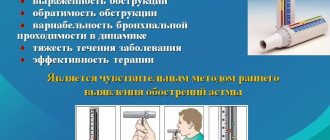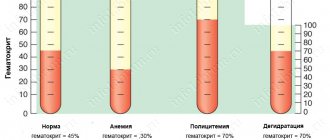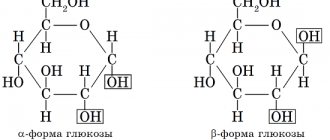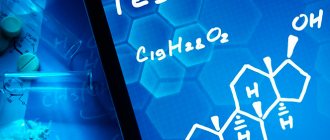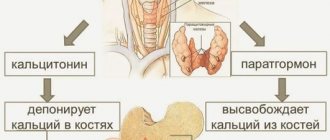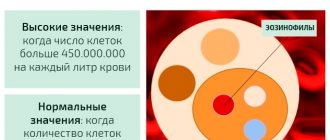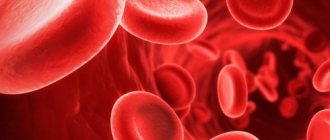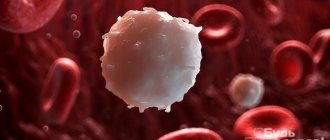Rheumatism tests are a complex of biochemical blood tests that are needed to diagnose rheumatism and autoimmune pathologies. They detect the inflammatory process in the body and its severity. The sooner it is identified and treated, the greater the result can be achieved.
Tests also help to make the correct diagnosis for atypical complaints or hidden forms of the disease. Read more about the indicators of rheumatic tests and their interpretation in this article.
Indications for analysis
Rheumatic tests are a study that has a fairly broad diagnostic importance. It is usually prescribed to people who are suspected of having an autoimmune disease.
In addition, this study is carried out in the presence of the following diseases:
- Rheumatism, arthritis of a reactive or rheumatoid nature;
- Lupus erythematosus or autoimmune glomerulonephritis;
- Type 1 diabetes, multiple sclerosis;
- Autoimmune thyroiditis and other thyroid diseases;
- Sjögren's syndrome, scleroderma;
- Autoimmune prostatitis, polymyositis.
In addition, your doctor may send you for a blood test for rheumatic tests if there is a suspicion of the development of these diseases. The main purpose of the analysis is to determine specific markers and antibodies in human blood, which can be used to identify various pathologies. In addition, these indicators can reflect the state of the human body in the presence of these ailments.
With the help of the study, it is possible to determine the condition of the human body, as well as the effectiveness of the treatment regimen.
Patients are often sent for rheumatic testing if the following indications exist:
- Painful sensations in the joints;
- Discomfort in the lower back;
- Limited mobility and swelling of the joints;
- Frequent attacks of increased body temperature;
- Impaired functioning of the ligamentous apparatus;
- Disorders of the musculoskeletal system;
- Attacks of headaches that cannot be relieved with antispasmodics;
- Connective tissue diseases.
Reasons for the increase in indicators
A significant excess of rheumatic test norms, in most cases, indicates the presence of an autoimmune disease, but which one exactly? Despite the fact that they have low specificity, even the analyzes can suggest the most likely reason or group of reasons for the increase in indicators. To do this, just use the table below. It indicates which indicators should be expected to be exceeded for a certain pathology.
| Disease\Indicator | Rheumatoid factor | AntiDNA | Antinuclear factor | HLA B27 |
| Rheumatoid arthritis | +/- | — | — | + |
| Systemic lupus erythematosus | + | + | + | — |
| Scleroderma | + | More often - | + | — |
| Reiter's disease | — | — | — | + |
| Ankylosing spondylitis | — | — | — | + |
| Sjögren's disease | + | More often - | + | — |
The data provided should be of an auxiliary nature only in diagnosis. First of all, you should always focus on the person’s condition and the presence of symptoms of damage to various organs. Only by taking into account all these signs can a correct diagnosis be assumed with a high degree of probability.
Types of rheumatic tests
Rheumatic tests are a blood test that can reveal many abnormalities in the functioning of the body. This procedure can be performed both in private clinics and city clinics. Typically, patients who have signs of systemic disease are referred for this study.
The analysis includes studies:
- Rheumatoid factor is an antibody that occurs as a result of a specific antibody response. They are produced by human immune cells. Such substances affect the connective tissue of the body. If the norm of this indicator is significantly exceeded, the doctor concludes that rheumatoid arthritis is present. It may also be a sign of other medical conditions.
- AntiDNA is a test for a specific substance produced by leukocytes. For its appearance, a powerful autoimmune process in the body is necessary. These cells directly attack the DNA strands where all human genetic information is stored. If there are deviations in this indicator, the doctor can conclude that the pathological process affects all internal organs.
- NLAB27 is an analysis for a specific antigen that appears exclusively in the presence of a genetic predisposition. Often, thanks to this study, it is possible to identify many autoimmune diseases. The accuracy of this study is 90%.
- Antinuclear factor is an antibody that is produced by the body exclusively in case of autoimmune pathologies. They affect cellular tissue, which is why deviations occur.
Several decades ago, analysis for rheumatic tests also included a study for markers. In addition, this included studies for streptococcal infection - antistreptolysin and antistreptokinase. Thanks to these parameters, it was possible to identify acute rheumatic fever in a patient. These are viral diseases transmitted by airborne droplets. At the moment, their prevalence is extremely low.
What are systemic diseases?
This group includes a large number of diseases, united by one characteristic feature - they develop autoimmune inflammation. This is a special pathological process in which an “error” occurs in the functioning of the patient’s immune system. Because of this disorder, antibodies begin to attack healthy tissues of the body, rather than bacteria, viruses and other harmful microorganisms.
Currently, the most common systemic pathologies are:
- Rheumatoid arthritis;
- Systemic lupus erythematosus;
- Scleroderma;
- Urethro-oculosynovial syndrome (Reiter's syndrome);
- Ankylosing spondylitis (synonym – ankylosing spondylitis);
- "Dry" syndrome (Sjögren's syndrome).
The reliable causes of the occurrence of these pathologies still remain unknown to modern science. Of all the variety of harmful factors, one special bacterium deserves attention - Hemolytic Streptococcus A. It has been proven that after it enters the body, the functioning of the immune system may be disrupted, and antibodies against normal cells and organs may appear. This microorganism is the main cause of rheumatic fever (rheumatism).
Most rheumatic tests are aimed specifically at identifying “wrong” antibodies. Since the mechanism of development of all systemic diseases is quite similar, it is almost impossible to make a final diagnosis based on the results of examinations - the same indicators can increase for different pathologies. But if you take into account not only laboratory data, but also symptoms, you can make an effective diagnosis.
Decoding rheumatic tests
Rheumatic tests are an extensive diagnostic examination that allows you to identify many autoimmune diseases.
Keep in mind that this disease must be deciphered by a qualified attending physician. This is the only way you will be able to obtain accurate data, as well as qualified treatment. You should not study these parameters on your own.
Seromucoids
Without going into details and biochemical jungle, these are complex proteins with carbohydrate components in their composition, which increase during inflammatory processes.
Possible problems include:
- Tumors. Especially ones that fall apart.
- Autoimmune diseases. Rheumatism, arthritis, some forms of kidney pathologies. For example, glomerulonephritis. Also lesions of the thyroid gland (much less common). There are dozens of options.
- Inflammatory processes located in the pelvis. In women, mainly colpitis, endometritis and the like. In men - orchitis, balanitis, prostatitis. Representatives of both sexes have cystitis, inflammation of the urethra and ureters. Also the kidneys, as already mentioned.
- Damage to the gallbladder - cholecystitis.
- Stones in this small organ.
- Inflammation of the pancreas (pancreatitis).
The options can be named further. Although seromucoids are not often used in medical practice, they are an informative criterion and at the same time a rheumatological indicator.
Protein and its fractions
A protein test in a rheumatoid blood test allows you to determine the concentration of proteins in the body. This study allows us to identify not only rheumatoid processes in the body, but also autoimmune ones. The analysis also reveals the concentration of globulins and albumins in the blood, and in some cases, fibrinogens.
The norm for these indicators is as follows:
| Age | Total protein, g/l | Albumin, g/l |
| Less than a year | 40-75 | 38-54 |
| From 1 to 5 years | 60-70 | 38-54 |
| From 5 to 15 years | 60-75 | 38-54 |
| From 15 to 60 years | 70-83 | 35-55 |
| Over 60 years old | 60-77 | 34-48 |
Exceeding these indicators may indicate an acute course of rheumatism. In addition, an increase in the amount of protein in the blood may indicate a lack of fluid in the body. If this indicator is too high, it may indicate the development of an infectious process.
This study also makes it possible to identify autoimmune diseases such as rheumatism, arthritis, lupus, and ankylosing spondylitis. Protein analysis is also carried out if there is a suspicion of cancer. Deviation from the norm can easily indicate multiple myeloma.
A decrease in protein and albumin levels may indicate a disorder in the liver - when this organ cannot produce enough components. Also, deviation from the norm can occur due to an unbalanced diet.
Massive burns, diabetes mellitus, fever, skin damage, and intense physical activity can provoke a decrease in protein concentration. This study alone does not have any diagnostic value - it is carried out in conjunction with other studies.
“You need to do rheumatic tests...”
rheumatoid arthritis is not the only one, but one of the main processes, in case of risk/suspicion of which rheumatoid tests are traditionally prescribed.
Typically, rheumatoid tests are prescribed after a bacterial or viral infection, if there is a suspicion that it could trigger an autoimmune process, or in case of signs of development of chronic inflammatory reactions due to other reasons. So, the following can be considered a reason to take a blood test and do rheumatic tests:
- Immuninflammatory kidney diseases (glomerulonephritis);
- Frequent sore throats (diagnosis: chronic tonsillitis);
- Oncological pathology of various localizations;
- Autoimmune diseases (SLE - systemic lupus erythematosus, RA - rheumatoid arthritis).
In such cases, a blood test (rheumatic test) shows how far the autoimmune process has gone, what changes it has caused in the body, and how the body has responded (or is responding) to the treatment measures taken. By answering the questions posed, this laboratory test helps the doctor to correctly assess the degree of progression of the disease and the patient’s condition, and also makes it possible to predict the outcome of the disease and the effectiveness of the prescribed therapy.
As mentioned above, rheumatic tests may include various laboratory indicators:
- C-reactive protein (CRP, CRP, CRP);
- Rheumatoid factor (RF);
- Antistreptolysin O (ASL-O, ASO);
- Antibodies to cyclic citrullinated peptide (A-CCP, A-CCP, anti-CCP);
- Total protein with its division into fractions (α, β, γ);
- Uric acid (UA), creatinine, urea, creatine;
- Circulating immune complexes (CIC);
- In other cases, sialic acids (sialoglycoproteins), which occupy a marginal position in carbohydrate-protein complexes and have a tendency to increase in the case of compensatory inflammatory reactions, as well as seromucoids (a fraction of carbohydrate-protein complexes, which include proteins) can be added to the list of rheumatic tests. acute phase), noticeably deviating from the norm in any inflammatory process.
Certain biochemical indicators are not always included in the list of laboratory tests called “rheumatic tests.” For example, total protein and protein fractions are of interest if the patient is suspected (or diagnosed) of hematological diseases, including malignant ones, myeloma, autoimmune processes, and severe liver damage. A uric acid test is done when symptoms of gout are present. And creatine, creatinine and urea will confirm suspicions regarding the development of renal pathology (or, conversely, exclude kidney disease).
The determination of circulating immune complexes (CIC) - indicators of the formation of inflammatory reactions and the activity of autoimmune processes occurring in the body (rheumatism, collagenosis, glomerulonephritis, consequences of viral and bacterial infections) is not always carried out. This is due to some difficulties: identifying CEC does not belong to traditional biochemical studies; analysis of this kind is the responsibility of immunological laboratories, which are provided with test kits for the production of such analyzes and are engaged in similar activities on a daily basis. Of course, clinical diagnostic laboratories located in multidisciplinary clinics in large cities have this advantage.
Rheumatic tests in children
Analysis for rheumatic tests is often prescribed for children. It is usually performed in the presence of infectious diseases or inflammatory processes. In addition, your child will definitely be sent for an antistreptolysin test if a streptococcal infection is suspected.
Please note that this parameter is influenced by many factors. The presence of these substances in a child’s blood does not indicate infection. It is necessary to determine the dynamics of the parameter over a certain period of time.
A high level of antistreptolysin may indicate the presence of immune abilities to this pathogen . In addition, this parameter may have maximum values for several months after treatment. On average, the recovery period takes from two months to several years.
Also, analysis for rheumatic tests in children includes a study of the number of seromucoids. Its high level may indicate the development of chickenpox, rubella and measles.
Antistreptolysin-O (ASLO, ASO)
Antisteptolysin-O are antibodies (AT) directed to streptolysin (the so-called antigen of beta-hemolytic streptococcus). The norm for adults is up to 200 U/l; for children under 14 years old – up to 150 U/l.
Considering the particular “harmfulness” of hemolytic streptococcus (secondary infections, all kinds of complications), a test that determines its presence in the body is considered a very significant laboratory indicator. It is used not only to diagnose pathological conditions caused by Streptococcus pyogenes, but also to monitor the development of the inflammatory process, its prognosis and the effectiveness of treatment. Meanwhile, it should be noted that a single study may not provide adequate information, that is, negative results the first time are not able to reassure either the doctor or the patient (in 15% of rheumatic patients, an increase in AT titers may be recorded every other time or not detected at all) .
To determine antistreptolysin-O and its titers (the kit includes a separate titration kit), there is also a latex test - the study is quick and not labor-intensive, but some doctors prefer to conduct a blood test using the turbidimetric method, as they have more confidence in it. But this method (turbidimetric) already requires the use of more complex equipment.
Preparing for analysis
In order for the analysis of rheumatic tests to show the most correct result, it is necessary to properly prepare for it. To determine the parameters, venous blood is required, which is taken directly in a hospital setting. If you follow all the doctor's recommendations, the test result will be accurate.
Don't forget the following preparation rules:
- You should donate blood only on an empty stomach. At least 10 hours must pass between the last meal and the blood sampling procedure;
- The day before the test, you should completely avoid any physical activity;
- A few days before blood sampling, you should avoid drinking alcoholic beverages and smoking;
- The day before the test, you should completely review your diet - you should give up heavy foods, fatty, fried foods. It is best to eat plant foods, but do not overeat;
- Blood for research is taken from the elbow joint.
It must be taken into account that it is impossible to judge the patient’s condition solely with the help of an analysis of rheumatic tests.
If the indicators of this study exceed the norm, then the patient is sent for an extended diagnostic examination. It allows you to identify the exact state of the body. Analysis for rheumatic factor is carried out regularly to determine the effectiveness of the chosen treatment tactics - the parameters are studied over time.
How to take a blood test correctly
Rheumatic tests have sufficient accuracy, but for the reliability of the results, preparation for the examination is required. Due to the nature of the analysis, the blood should not contain a lot of fat. Therefore, any spicy, fried and fatty foods, cakes, pastries, and butter are excluded from the diet 2–3 days before diagnosis.
It is not recommended to overeat at this time; feasts with alcoholic beverages are especially undesirable. During the day, alcohol is completely prohibited.
It is important to discuss the possible discontinuation of medications with your doctor 3 to 5 days in advance. If the course of therapy needs to be continued, then the laboratory must be provided with a list of all medications that the patient took during this period.
Blood is taken from a vein on an empty stomach. This means that at least 8 to 10 hours must pass after the last meal and drink. Drinking water without additives does not need to be limited. For 1 - 2 hours you should not smoke, play sports, do heavy physical work, or be nervous. For half an hour before the examination, complete physical and emotional rest is required.
If the patient needs physiotherapy or instrumental diagnostics, then they need to be done after a blood test.
Reasons for increased results
Analysis for rheumatic tests is an important diagnostic examination. It can be used to identify many diseases of internal organs. In addition, the study is designed to detect serious autoimmune diseases in the early stages.
An elevated level of rheumatic tests may indicate the following diseases:
- Inflammatory or infectious processes in the body - syphilis, bacterial endocarditis, infectious mononucleosis, tuberculosis.
- Chronic inflammatory diseases affecting the lungs, kidneys and liver.
- Sjögren's syndrome is an autoimmune disease that affects connective tissue. The pathological process affects the endocrine glands.
- Scleroderma, systemic lupus erythematosus, cancer.
- Sarcoidosis, dermatomycosis, consequences of surgical interventions.
- Hyperglobulinemia, diseases of a lymphopropiferative nature.
- Still's syndrome is a type of childhood arthritis in which the concentration of white blood cells increases significantly.
Please note that in each specific case the diagnosis should be carried out by an experienced doctor. Only he can determine the norm for your body. It must be remembered that in older people an increase in this parameter may be a natural process.
Try to undergo regular diagnostic examinations to identify any abnormalities in the early stages. This way treatment will be prescribed in a timely manner.
Interpretation of indicators, their norm and deviations
The diagnosis of an autoimmune disease can be excluded if:
- ASL-O up to 7 years is less than 100, up to 14 – less than 250, and then at any age in an adult it does not exceed 200 units per 1 ml;
- C-reactive protein is not detected or is not more than 5 mg/l;
- rheumatoid factor up to 30 IU/ml;
- leukocytes contain from 4.5 to 11 thousand per 0.001 ml;
- ESR for women is up to 12, and for men no higher than 10;
- antinuclear antibodies are absent.
Sometimes the laboratory may measure in other units. In this case, the form always indicates the range of normal values. If an increase in indicators is detected, this may indicate the following diseases:
- rheumatism,
- scleroderma,
- Waldenström's macroglobulinemia,
- Sjögren's syndrome,
- rheumatoid arthritis,
- lupus erythematosus.
An increase in ASL-O most often occurs in the following diseases:
- rheumatism;
- erysipelas, pyoderma;
- tonsillitis, tonsillitis, scarlet fever;
- osteomyelitis;
- glomerulonephritis.
It should be taken into account that pathologies of internal organs, infectious processes, as well as some physiological conditions can lead to changes in results. For example, a moderate increase in rheumatoid factor occurs with tuberculosis, syphilis, hepatitis, mononucleosis, malaria, and viral infections, including in newborns.
An increase in C-reactive protein levels is caused by:
- surgeries, especially organ transplants;
- inflammatory processes in the stomach, intestines, pancreas, gall bladder;
- malignant neoplasms;
- amyloidosis;
- tuberculosis;
- meningitis;
- the use of female sex hormones for contraception or replacement therapy during menopause.
During myocardial infarction, this protein appears a day after the onset of the attack, and disappears on the 15th - 20th day. It is important that during angina pectoris it remains within normal limits.
Scheme of binding of CRP to bacterial cell wall components
Antinuclear antibodies can be present in the blood with active hepatitis, infective endocarditis, tuberculosis and HIV, type 1 diabetes, multiple sclerosis. ESR in women increases during menstruation, pregnancy, and after childbirth. An increase in this indicator occurs with any inflammation, infection, poisoning, injury, or fractures. Kidney diseases and tumors are also accompanied by high values.
Why is a serological reaction needed in the analysis?
Serodiagnosis serves for the specific direct detection of viral particles.
A serological reaction is the process of identifying an unknown antigen from an already known antibody. Nowadays, this type of diagnostics is widely used in conventional medicine and forensics, since the reliability of the data obtained is very high. It follows from this that the result of the rheumatic test (whether it is normal or pathological) will be accurate.
Serological analysis is basic and is used to determine infections of various etiologies (syphilis, toxoplasma, HIV, hepatitis, mycoplasma and many others). No special preparation is required when donating blood, and the reaction is absolutely safe.
Useful video
Watch the video about rheumatoid factor in rheumatoid arthritis:
A pathology such as rheumatoid vasculitis is a continuation of arthritis, adding many new problems to the patient. What are the symptoms of the onset of pathology? What treatment will be chosen?
If atherosclerosis is suspected, the examination should be carried out in full. It includes a blood test, including a biochemical one, as well as many others. Which ones are still worth taking?
To determine the presence of streptococcal infection and others, an ASL-O test is prescribed. There is an established blood level for adults and children. What are the reasons that the value may be increased? What will the indicator tell you?
Taking a blood test for cholesterol is useful even for a completely healthy person. The norm is different for women and men. It is correct to do a biochemical and detailed analysis of HDL on an empty stomach. Preparation is required. The doctor will help you decipher the designation.
Tests for vasculitis are taken to select the dosage of medications and the degree of progression of the disease. What will blood test diagnostics reveal? What laboratory and instrumental tests are required for hemorrhagic vasculitis to determine it?
Protein in the blood is determined if many pathologies are suspected, including oncology. The analysis helps determine the normal, elevated levels of reactive c and protein s. It is worth understanding the values: blood for eosinophilic cationic protein, total. Does the blood thicken or not?
Laboratory diagnosis of myocardial infarction includes general blood and urine tests. Timely implementation and correct interpretation will help prescribe treatment.
The disease rheumatic carditis, the symptoms of which may be vague, occurs mainly in children aged 5-15 years. Can be primary, recurrent, acute or chronic. Diagnosis of heart pain is difficult due to its similarity with other pathologies; treatment in hospital.
When a lipid profile is performed, the norm will show the condition of the blood vessels and the presence of cholesterol in them. Deciphering the indicators in adults, as well as the size of triglycerides and LPVL will help you choose treatment - diet or medications. When is an expanded one needed?
➤
Rheumatology screening
Rheumatological screening is the active use of rheumatological tests for the purpose of early detection of rheumatological pathology.
In order for something to be called screening, it must be cheap and indicative in terms of making a diagnosis.
Let's figure out the price. Raising a rather complex study to the rank of a mass study, to the level of a well-known general blood test, is not rational in material terms. Well, it’s just expensive to do immunological tests at every doctor’s visit in addition to standard blood and urine tests. When the testimony written above comes, then, of course, please.
ASLO, SRP and RF are highly specific markers of the inflammatory immune process. But they cannot answer the question about the location of this inflammation and the nature. So rheumatic tests cannot be screening.
C-reactive protein
This protein is produced in the liver in response to any inflammation, neoplasm, or injury. Participates in the activation of the immune system, in binding and removing the remains of destroyed cells from the body. Together with ESR, it is a specific marker of inflammatory processes.
The clinical significance of determining C-reactive protein is determined by the direct relationship between its amount and the degree of inflammation. Protein rises rapidly within the first hours after the onset of the inflammatory process, and just as rapidly falls as it subsides.
Important! In newborns, liver function has not yet developed, so inflammatory processes in them may not be accompanied by an increase in C-reactive protein.
The normal level of C-reactive protein is not higher than 0.5 mg/l. A low level or absence of this protein in the blood is not considered a pathology.
Symptoms and diagnosis of the disease
The symptoms of rheumatism are extensive. It has the following manifestations:
- fever;
- headache;
- heart pain;
- nosebleeds (in rare cases);
- dyspnea.
Rheumatoid arthritis causes joint pain throughout the body. The hip, shoulder, knee, ankle, and elbow joints may be affected. Usually large joints become inflamed.
In rheumatism, the cardiotoxic effect of untreated streptococcus leads to tissue damage and an inflammatory reaction. The immune system produces proteins that are part of the infection to fight infection, but these proteins are also found in many cells in the body. Thus, the immune system harms its own body.
To diagnose rheumatism, biochemical analysis and various tests are required. The reason for checking is general malaise. Identifying the disease is quite problematic. It is necessary to use a modern approach for prompt diagnosis and development of a treatment regimen.
The reason to visit a doctor may be symptoms similar to arthrosis of the shoulder or knee. Joint diseases have similar manifestations, but the treatment for each individual disease can be very different.
What tests are included in rheumatic tests and what do they indicate?
A blood test for rheumatic tests is characterized by a set of studies that identifies the number of main factors that provoke cancer and other diseases
It is important to know the ratio of indicators as a percentage, because the slightest change can indicate different forms of the pathological condition. Using indicators, you can find out the severity and stage of the disease
The analysis allows you to determine the cause and decide on a treatment regimen. Thanks to rheumatic tests, doctors monitor the therapeutic process and can adjust it if necessary. The basis of a blood test for rheumatic tests includes:
Rheumatoid factor (RF) is an indicator of an acute pathological process. In healthy people this factor is absent, i.e. equal to zero. Also, a figure not exceeding 14 IU/ml is considered to be an indicator of the RF norm in analysis for adults. In this case, the results are negative; if the value is above the norm, the results are positive. Inflated indicators are a sign of an inflammatory process of any etiology or location. This mainly happens when:
In old age, this protein is always present in the blood plasma due to age-related changes. A decrease may occur as a result of taking certain groups of medications, causing the analysis to be false negative.
- ASLO (antistreptolysin O) is an indicator of the increased presence of streptococcal infection. Often, an increase in streptococci is caused by a primary lesion: the urogenital canal;
- respiratory tract;
- intestinal tract;
- kidney
When the infection and its activity remain in the body for a long time, autoimmune diseases begin. However, in a healthy person, antistreptolysin is present in the blood, the levels of which are equal to the norm.
The figure may increase for several reasons - excessive cholesterol, stress, physical labor (stress). A false negative indicator can be recorded when taking hormonal and antibacterial agents.
C-reactive protein is an indicator of acute inflammation in the body. It is used both for diagnosis and for monitoring the results of therapy. An increase in this indicator in the blood indicates the development of an inflammatory process. It could also be a sign of a tumor, a sign of a heart attack. A decrease in plasma protein during treatment indicates the failure of therapy
Low C-reactive protein is not taken into account because it is not particularly significant
Protein performs necessary functions for the human body - it increases the number of antibodies to resist infection, stimulates and activates the immune system.
On the other hand, strong stimulation of the body's protective function can provoke autoimmune diseases, due to which internal organs are attacked by their own antibodies.
The protein reaction rate is high, already 5 hours after infection enters the body. The protein level is proportional to the rate of development of the pathological condition. This means that the more the disease progresses, the higher the C-reactive protein becomes.
For this reason, tracking this indicator over time is important.
Additional laboratory testing includes:
- CIC analysis (Circulating Immune Complexes) – antibodies and enzymes produced by the immune system. An increased indicator in the analysis indicates the accumulation of the components of the complex in the tissues of the body.
- Albumin is a substance present in all organisms and is part of the blood (protein compound). Its level characterizes the functioning of the liver and kidneys. An increase in levels occurs with dehydration and when taking diuretics.
- Seromucoids are a set of serum glycoproteins based on a carbohydrate component, due to which certain functions are carried out. This indicator increases sharply in the presence of an inflammatory reaction in the body and is a primary method of early diagnosis even before symptoms appear. This allows you to prevent the further development of pathologies such as:
- Total protein.
- Uric acid.
The conclusion is confirmed by the CBC, biochemical analysis of the material, and examination of the joint fluid. A positive test for CCP is 100% proof that a patient has acute rheumatoid arthritis.
The normal indicator is a figure within 3 U/ml, the maximum value is 5 U/ml.
When a child needs a rheumatic test:
* The appearance of a “butterfly” rash around the nose is one of the signs of systemic lupus erythematosus (SLE).
* Chronic or acute bacterial infections: sore throat, sinusitis, pharyngitis and others.
* Complaints of pain or aches in joints and muscles for no apparent reason (no injuries or sprains).
* Body temperature remains within 37.0 – 37.5° C for a long time.
* Repeated increase in body temperature two to three weeks after any acute infection, and especially sore throat.
On a note
* Rheumatoid factor can increase without any serious pathology in children with frequent colds and viral diseases.
* C-reactive protein appears in the blood 4-6 hours after tissue damage or the onset of illness. During treatment, it quickly decreases, which serves as a criterion for recovery.
Young patients require careful treatment and increased attention. Therefore, do not try to solve your child’s health problem on your own, as you may cause harm. Contact doctors and take advantage of modern laboratories using new technologies and highly sensitive reagents.
resident doctor of the children's department
photo: https://globallookpress.com/
| Laboratory diagnostics at the Angio Line MC is its own research base, which allows you to work: * quickly - results on the same day, biomaterial is not transported or re-issued, all processes are accelerated; * high quality – complete sterility, working only with proven reagents; * no overpayments - we work without intermediaries, which significantly saves your money. Take tests for admission to kindergarten, school or to get a job - in any of the branches from 8.00 to 12.00. Until mid-September - effective cancer screening at a special low price! Branches: st. Bolshakova, 95; st. Amundsen, 61; st. Sirenevy Boulevard, 8; st. Eremina, 3 Hospital: st. Tchaikovsky, 56 Tel.: 287-00-29 THERE ARE CONTRAINDICATIONS. IT IS NECESSARY TO SEEK A SPECIALIST'S ADVICE. |
Rheumatoid factor
In autoimmune reactions, the immune system attacks the body's own tissue cells. Most often, infectious agents provoke the appearance in the body of antibodies to its own connective tissue. The most common of them is streptococcus. Pathological antibodies react with normal immunoglobulins G to form an immune complex consisting of a pathological antibody and a normal antibody.
Rheumatoid factor is a complex of autoantibodies (usually IgM) that are produced by the cells of the synovium of the joints. Rheumatoid factor is first produced in the affected joint, then this process spreads to the bone marrow, lymph nodes, and spleen.
Antibodies attack connective tissue throughout the body (heart valves, inner surface of blood vessels, thyroid gland, surface of joints).
In the synovial fluid, these autoantibodies are attacked by granulocytes. As a result, histamine is released, inflammation appears, which destroys the joint. Autoantibodies can combine with blood proteins, complement proteins and form large complexes that are deposited in tissues and on the walls of blood vessels. There they are attacked by macrophages, which causes vasculitis and autoimmune reactions in other organs.
Important! Typically, the streptococci that triggered this reaction are no longer in the body’s tissues, but antibodies continue to be produced and destroy healthy cells.
Norm (in International Units):
- 12-50 years – up to 14 IU/ml.
- Up to 12 years – up to 12.5 IU/ml.
